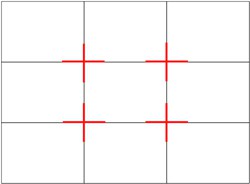Introduction:
A cineroman is a short video sequence, made up of a collection of still images which are accompanied by audio. The photographic images are meant to to show a visual story when linked together by forming a photo-narrative. The accompanying audio track should enrich the story.
- no longer than 1 minute long
- must be completed in pairs
- un limited amount of pictures can be used, but think of how effective length of pictures can be
- a risk assessment must be completed to take equipment off campus
Idea behind it:
Coming up with a storying idea for my cineroman was more difficult than what i anticipated it to be. With the story only being shown through pictures, I needed the storyline to be something that can easily be understood from just still images. I came up with a few ideas and started to plan them, however I quickly discovered that I had no personal interest in my ideas and really wanted to use this opportunity to show something that I am passionate about. This realisation made me want to do something that had a sub purpose to promote something that I wanted to change.
All of this gave me the final decision that I wanted to show my passion of make up in a different way. Society ‘tells’ us that in order to be pretty and beautiful we must cover our selves in make up and effectively change the way we look to become a better version of our selves. I want to change that, and through the use of still images to show the process of applying make up and the change of emotion someone can go through to try fit in, I want people to question societies view.
Risk Assessments:
This was the first task where we had to fill in a risk assessment, see attachment below:
See 500 word statement below for detailed outline
Finished product:
This is my finished cineroman video which focuses on the expectations from society on how we should look with regards to make up.
[vimeo]https://vimeo.com/194538321[/vimeo]
500 word Statement:
For the task of creating a cineroman I decided to create it on something I am comfortable with and have good knowledge on and link it to societies views. I wanted to show what change make up can create on the way someone looks, however that does not always mean that someone is happy in doing that just because society expects them to look a certain way. This task was also carried out in a pair with the other person being used as the contributor for the photographer during this task. Although we had no restrictions on where we should create this production, we decided to stay on campus during the task and make the most of the black curtaining within one of our media studios to create focus on what we were showing.
As we were only taking photographs for this task, we only needed a camera. The equipment we used was a Canon 70D DSLR camera and a tripod for the camera to securely stand on. As we could take equipment from the university campus, a risk assessment had to be completed (see risk assessment subheading above). One of the health and safety risks was access in and out of the room we would be filming within. Although the room has 3 exits one of the fire exits was close to where filming was so we had to make sure no equipment or other objects were in the way to the door. With using make-up as part of my cineroman I had to make sure there were no risks of my contributor having a reaction to any of the make-up being used on her skin. With the room being open for anyone to walk in we had to make sure there was no risk for the public and no risk of slipping, tripping or falling. To prevent this, we made sure all equipment was kept minimal and all excess bags were kept neatly together and out of the way.
During this task, I was focusing on using the “rule of thirds” as well as the ISO, shutter speed and aperture of the camera. “The basic principle behind the rule of thirds is to imagine breaking an image down into thirds (both horizontally and vertically) so that you have 9 parts” (Darren Rowse, 2006). The theory is that if you place points of interest in the intersections or along the lines that your photo becomes more balanced and will enable a viewer of the image to interact with it more naturally (see image below). This I helped by the features within the camera. The aperture links to depth of field within the image being taken, ISO referring to the light sensitivity and the shutter speed linking to the action meaning whether the image would be blurry or not (see image below). Linking these features together and using them in the correct way would create the perfect photograph (Marcus Hawkins, 2015). This is why I chose this task to present.
When editing I had to change my planned idea from creating a montage of showing how females do their make-up to fit into society as the images did not flow properly when edited together. I therefore had to quickly change my idea and show the process grow and then fade back down as a representation of a false happiness through the grittiness of the editing and the miss match of happy and sad photographs.
Hawkins, M. (2015). The Exposure triangle: aperture, shutter speed and IOS explained. [Internet]. Available from http://www.techradar.com/how-to/photography-video-capture/cameras/the-exposure-triangle-aperture-shutter-speed-and-iso-explained-1320830 [Accessed February 2017].
Rowse, D. (2006). Rule of Thirds. [Internet]. Available from https://digital-photography-school.com/rule-of-thirds/ [Accessed November 2016].

